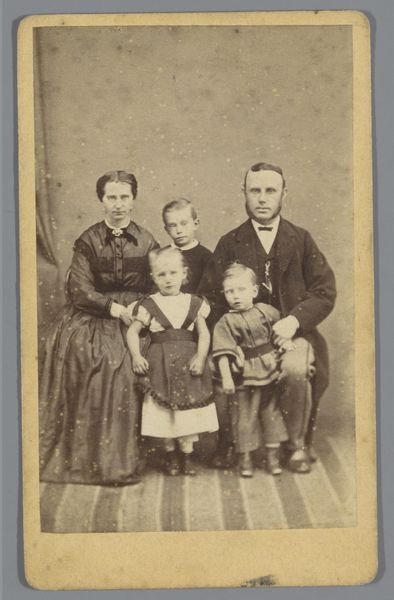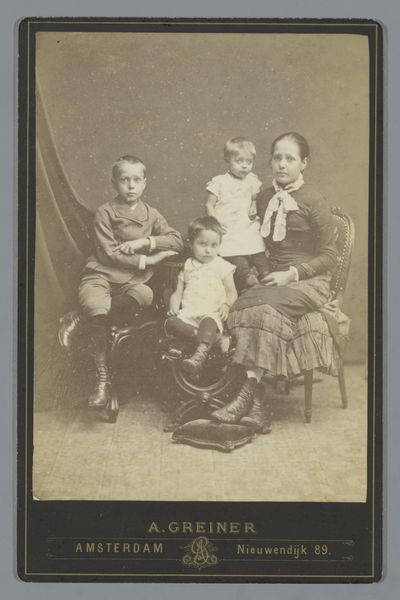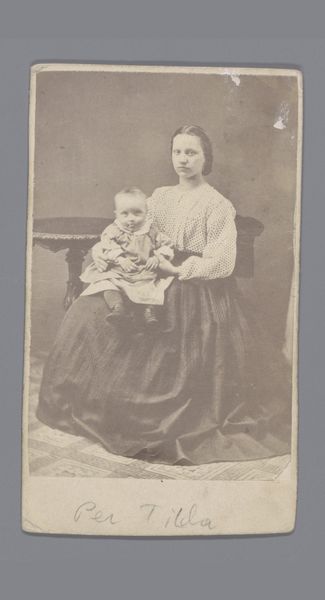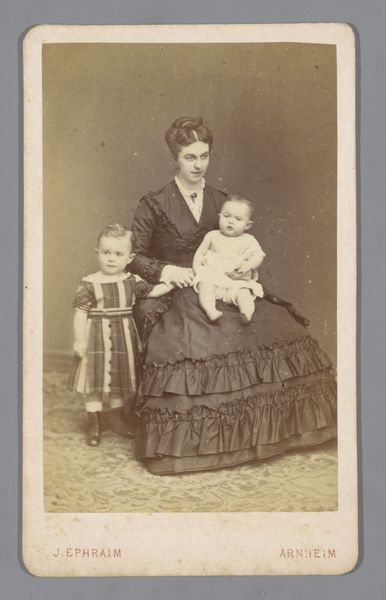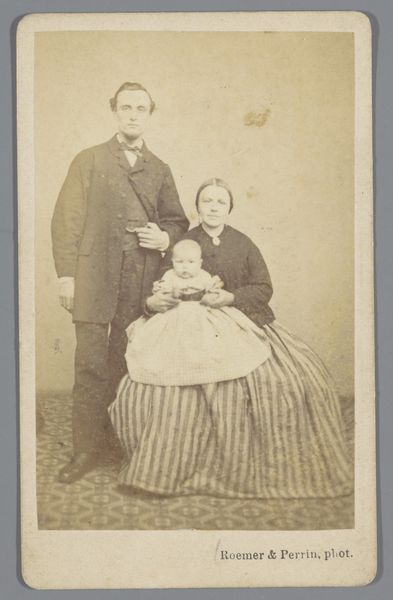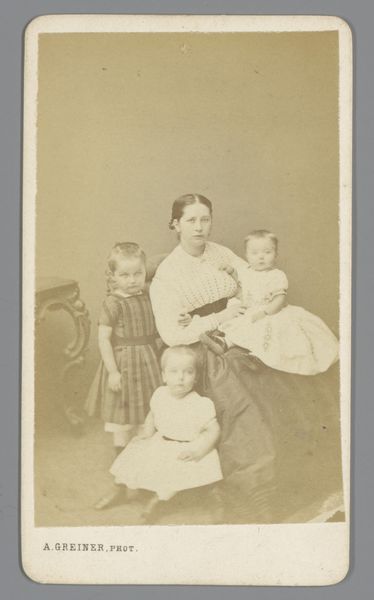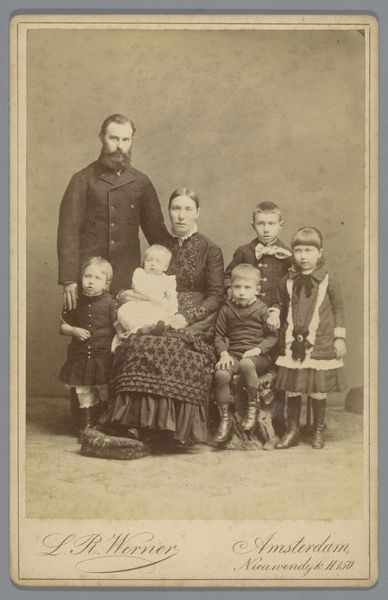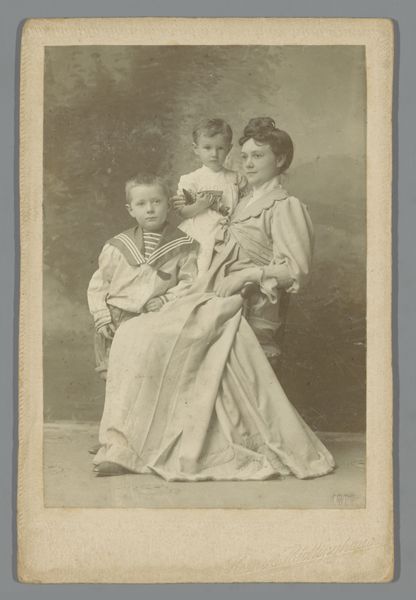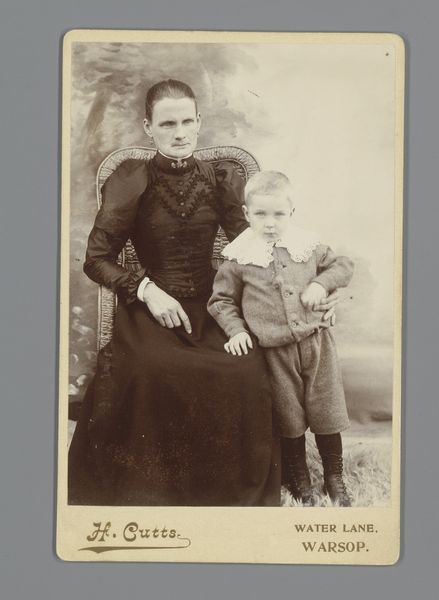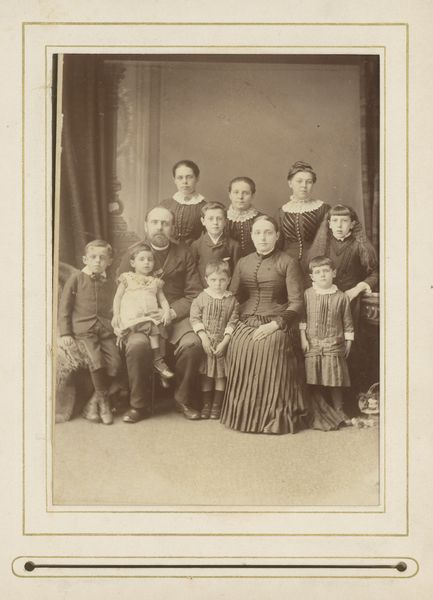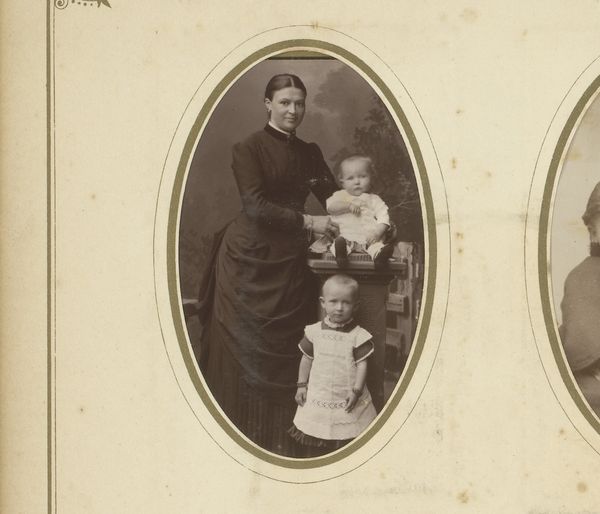
photography, gelatin-silver-print
#
portrait
#
mother
#
photography
#
group-portraits
#
gelatin-silver-print
#
realism
Dimensions: height 105 mm, width 63 mm
Copyright: Rijks Museum: Open Domain
Curator: Here we have a photograph titled "Portret van Truus van Leeuwen met haar kinderen Dirk en Teun," placing Truus at the center with her children. It’s thought to have been taken between 1867 and 1870, created as a gelatin silver print. Editor: There’s a kind of melancholy in this portrait, don't you think? The lighting, the expressions… it speaks of a particular moment frozen in time, weighted down a bit by formality, yet tender with the mother and her children. Curator: The choice of the gelatin silver process is key. By that era, it was allowing for greater detail and reproducibility compared to earlier photographic methods like daguerreotypes or albumen prints, making portraits like these more accessible to a rising middle class. Think about the labor involved—preparing the plates, developing the print—it all contributed to the final object's perceived value. Editor: Absolutely. And there's the backdrop. That textured ground doesn’t distract much from her face and from how that little child’s shoes look huge on her tiny feet. She probably grew into them very fast! It is so nice they get recorded like this! It triggers that cozy feeling one gets on vintage photo hunts at thrift stores. It is also hard to avoid noticing this little boy and his cute walking stick. He looks so dapper! Curator: We also see the performance of motherhood here, how the expectations of gender roles get represented. The voluminous dress she wears signifies prosperity, stability. Her pose also: seated and embracing the child shows the period's values, like her dedication to children and a bourgeois life. Editor: Well put! She doesn’t look especially thrilled about having her picture taken. More like resigned? But in a graceful way? There’s an underlying strength. What materials could tell, if only they spoke more about how it felt like to sit so rigidly with restless children. Curator: These photographs served as important markers of identity and social standing. Owning one's likeness signaled belonging. The silver gelatin prints are inherently reproducible and less precious than a unique print from older days of photography. They capture ordinary lives and social mobility, revealing their consumer value, and turning art into an industrialized creation of sorts. Editor: It’s true. So much about the period and its values, revealed simply by observing this maternal bond that feels still recognizable, almost familiar after so many years! Curator: Indeed, seeing her as more than simply a “mother”, and recognizing her societal role as an important piece of history itself brings a great sense of value for understanding society.
Comments
No comments
Be the first to comment and join the conversation on the ultimate creative platform.
